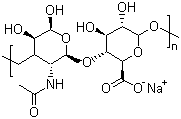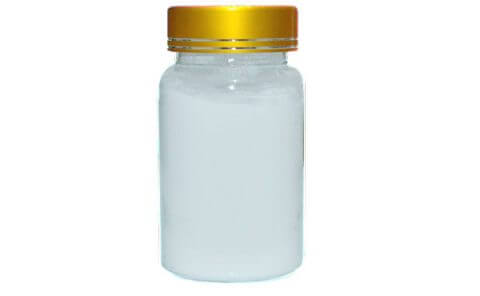
English name: Sodium hyaluronate
Other name: Hyaluronic acid sodium salt; Chlamyhyaluronic acid sodium salt
Cas No.: 9067-32-7
Specification: Cosmetic, food grade, pharmaceutical grade.
Appearance: White crystalline powder
Active Ingredient: Hyaluronic Acid
Molecular Formula: (C14H20NO11Na)n

Efficiency
1)increase skin elasticity, and postpone skin aging.
2)promote the proliferation and differentiation of epidermal cells, removal of oxygen free radicals,
3)prevent and repair skin damage. Hyaluronic acid aqueous solution has a high viscosity
4)make the water phase thicken, And paste evenly after the oil phase emulsification is exquisite and stable. Hyaluronic acid is one of the best natural moisturizing ingredients for high-end cosmetics, with good compatibility
5)Can be added to almost any beauty cosmetics, widely used in cream, lotion, lotion, essence, cleansers, bath, wash hair, moss, expansion, lipstick, and other cosmetics, general content is 0.05-0.5%.
Application
Food supplements:
Hyaluronic Acid through oral administration after digestion absorption, increases in vivo hyaluronan synthesis of the precursor, causing the skin and other organization’s hyaluronan resultant quantity to increase, thus enabling the skin the water retention property to increase, rich elasticity, and wrinkle reduction.
Medical applications:
Hyaluronan could be used in eye surgery, such as corneal transplantation, cataract surgery, glaucoma surgery, and surgery to repair retinal detachment. Hyaluronan can also be used to treat osteoarthritis of the knee. They are administered as a course of injections into the knee joint, which is believed to supplement the viscosity of the joint fluid, thereby lubricating the joint, cushioning the joint, and producing an analgesic effect. Hyaluronan has also been used in the synthesis of biological scaffolds for wound-healing applications. These scaffolds typically have proteins such as fibronectin attached to the hyaluronan to facilitate cell migration into the wound. Hyaluronan is also used in anti-adhesive products, which are widely used in pelvic and abdominal surgery to prevent postoperative adhesions.
Cosmetics applications:
Hyaluronan has outstanding moisture-keeping ability, thus called the Natural Moisturizing Factor in the world. Hyaluronan is a common ingredient in skin-care products, which can be used as a very effective topical humectant. In 2003, the FDA approved hyaluronan injections for filling soft tissue defects, which can be used for facial wrinkles, lip augmentation, reduction of folds and wrinkles, and removal of scars.
Equine applications:
Hyaluronan is used in the treatment of articular disorders in horses, in particular those in competition or heavy work. It is indicated for carpal and fetlock joint dysfunctions, especially used for synovitis associated with equine osteoarthritis. It can be injected directly into an affected joint, or intravenously for less localized disorders. It may cause mild heating of the joint if directly injected, but this does not affect the clinical outcome. Intra-articularly administered medicine is fully metabolized in less than a week.








